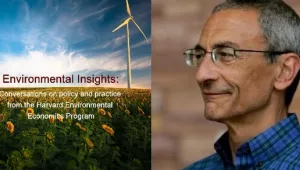
Reply to Cox et al. (2018), Nature 553 (7688), 319–322.
Abstract
Equilibrium climate sensitivity (ECS), the link between concentrations of greenhouse gases in the atmosphere and eventual global average temperatures, has been persistently and perhaps deeply uncertain. Its 'likely' range has been approximately between 1.5 and 4.5 degrees Centigrade for almost 40 years (Wagner and Weitzman, 2015). Moreover, Roe and Baker (2007), Weitzman (2009), and others have argued that its right-hand tail may be long, 'fat' even. Enter Cox et al. (2018), who use an 'emergent constraint' approach to characterize the probability distribution of ECS as having a central or best estimate of 2.8℃ with a 66% confi dence interval of 2.2–3.4℃. This implies, by their calculations, that the probability of ECS exceeding 4.5℃ is less than 1%. They characterize such kind of result as "renewing hope that we may yet be able to avoid global warming exceeding 2[℃]". We share the desire for less uncertainty around ECS (Weitzman, 2011; Wagner and Weitzman, 2015). However, we are afraid that the upper-tail emergent constraint on ECS is largely a function of the assumed normal error terms in the regression analysis. We do not attempt to evaluate Cox et al. (2018)'s physical modeling (aside from the normality assumption), leaving that task to physical scientists. We take Cox et al. (2018)’s 66% con fidence interval as given and explore the implications of applying alternative probability distributions. We find, for example, that moving from a normal to a log-normal distribution, while giving identical probabilities for being in the 2.2–3.4℃ range, increases the probability of exceeding 4.5℃ by over five times. Using instead a fat-tailed Pareto distribution, an admittedly extreme case, increases the probability by over forty times.
Wagner, Gernot and Martin L. Weitzman. "Potentially Large Equilibrium Climate Sensitivity Tail Uncertainty." Economics Letters, vol. 168. (July 2018): 144–146.
The full text of this publication is available via Economic Letters.




